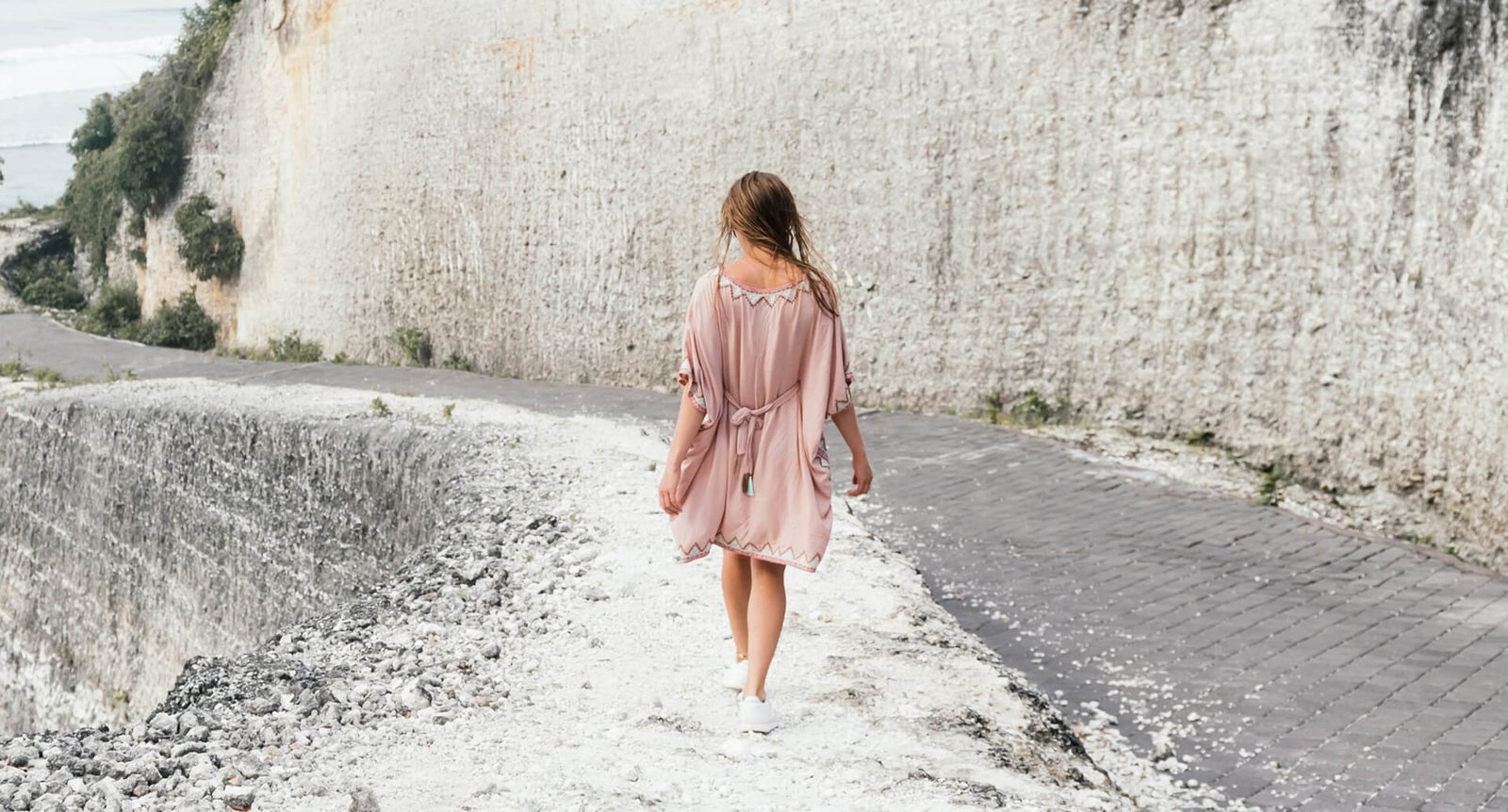Fashion is a dynamic element of personal expression, deeply intertwined with the seasons. The concept of seasonal fashion refers to the practice of adapting clothing choices to align with the distinct characteristics of each time of year. It is essential to recognize that seasons not only dictate the types of fabrics, colors, and silhouettes that are suitable but also influence individual style preferences. As the weather transitions from the cold and often harsh winter months to the warmth and vibrancy of summer, so too should our wardrobe.
Understanding seasonal fashion allows individuals to make informed decisions about their attire, ensuring comfort while remaining stylish. For instance, winter styles often emphasize heavier materials such as wool and cashmere, along with layering techniques to combat low temperatures. On the other hand, summer fashion typically leans towards lighter fabrics like cotton and linen, prioritizing breathability and comfort amidst heat. The evolution of personal style is particularly noticeable as individuals adapt their fashion choices based on seasonal cues, and this adaptation fosters creativity in wardrobe selection.
Moreover, seasonal fashion is not limited to mere temperature variations; it is also influenced by cultural trends, social events, and historical contexts. Each season presents unique opportunities to showcase personal style, and being adaptable allows one to explore various looks that resonate with their identity and lifestyle. In navigating the changing seasons, one can reflect individual tastes while also embracing practicality, ensuring that their wardrobe remains both functional and fashionable. As we delve deeper into the specifics of winter and summer styles, recognizing the significance of seasonal fashion will enhance our understanding of how to curate a versatile and appealing wardrobe.
Essential Winter Fashion Pieces
Winter fashion relies heavily on practicality without sacrificing style. Key clothing items are essential for creating a versatile and chic winter wardrobe. One of the most fundamental pieces is the thermal top, which serves as an excellent base layer, providing warmth while remaining discreet under bulkier clothing. Made from materials that wick moisture, thermal tops are perfect for layering beneath sweaters and outerwear.
Stylish sweaters are another staple. They come in various fabrics, including wool and cashmere, which not only offer warmth but also add texture and sophistication to outfits. Opting for chunky knits or fine-gauge options can help achieve diverse looks, providing versatility for both casual and formal occasions. When selecting a sweater, consider options in neutral colors to easily pair with other winter garments.
A classic overcoat is indispensable for any winter wardrobe. This outer layer elevates any ensemble, whether it’s layered over a casual outfit or worn to a formal event. Trench coats, pea coats, and wool overcoats are all excellent choices, offering a refined silhouette while protecting against the elements. It is advisable to invest in quality outerwear, as it will not only enhance aesthetics but also ensure comfort in colder temperatures.
Additionally, accessories play a crucial role in winter fashion. Scarves add warmth and a touch of style, allowing for myriad tying techniques and color combinations that can transform a simple look. Gloves, whether they are knitted or leather, are essential for keeping hands warm, while also contributing to a polished appearance. Knit hats, beanies, or berets can encapsulate the winter aesthetic, reinforcing the theme of coziness paired with elegance. Together, these essential pieces create a comprehensive winter wardrobe that combines functionality and fashion seamlessly.
Trendy Winter Outfit Ideas
As the colder months approach, it is essential to revamp your wardrobe with trendy winter outfit ideas that not only keep you warm but also allow you to express your personal style. The key to achieving fashionable winter looks lies in layering, which allows versatility to transition between casual and formal occasions.
A staple component of winter attire is the sweater. Opting for chunky knits, turtlenecks, or even cashmere can enhance your outfit’s aesthetic while ensuring comfort. A classic approach includes pairing a turtleneck sweater with tailored trousers for a refined look suitable for office settings. For a more relaxed version, a loose-fitting knit can easily be combined with high-waisted jeans or leggings, creating effortless chic outfits for informal gatherings.
Outerwear is another essential element of winter fashion. A tailored wool coat or a trendy puffer jacket can serve not just functional purposes, but also elevate your outfit. For example, a belted wool coat paired with ankle boots and a scarf creates an elegant silhouette perfect for evening outings. On the other hand, a colorful puffer jacket can add a fun twist to a simple outfit of skinny jeans and an oversized sweater, embracing a vibrant, playful aesthetic.
Accessories play a crucial role in winter attire, providing both style and warmth. Hats, gloves, and scarves can be used to introduce pops of color or patterns, making your outfit stand out. Remember to coordinate these accessories with the outfit’s overall color scheme to ensure a cohesive look. Experimenting with mixing and matching different textures and patterns can further enhance your winter wardrobe, allowing for a variety of looks that suit different occasions.
With careful consideration and creativity, you can curate a fashionable winter wardrobe that remains practical amidst the chilly weather. Trendy winter outfits not only keep you warm but also enable you to showcase your unique style throughout the season.
Essential Summer Fashion Pieces
As the seasons change, so do our wardrobes. In preparing for summer, it is crucial to select essential fashion pieces that offer both comfort and style. One of the key elements for a summer wardrobe is the incorporation of breathable fabrics. Materials like cotton and linen are highly recommended, as they allow for better airflow and help to regulate body temperature in the heat. These fabrics are not only practical but also versatile, making them suitable for various styles and occasions.
Sundresses are a quintessential summer staple. Their light fabrics and flowing designs provide an effortless elegance, allowing wearers to stay cool while looking chic. Whether it’s a casual day out or a garden party, a sundress can be dressed up with accessories or worn simply for a more laid-back look. As a complement to sundresses, lightweight cover-ups such as kimonos or linen jackets serve as perfect solutions for transitioning from beachwear to casual outings.
Swimwear is another indispensable component of summer attire. With beach days and pool parties on the horizon, selecting the right swimsuits—whether one-piece or bikini—is essential. Opting for designs that offer both style and support can significantly enhance the overall summer experience. Furthermore, it is vital to consider sun protection when curating a summer wardrobe. Sun hats, cover-ups, and clothes treated with UV protection can shield skin from harmful rays while maintaining fashionable looks.
Accessories also play a significant role in summer fashion. Sunglasses not only provide protection for the eyes but also complement any outfit, making them a must-have. Footwear choices, such as sandals or espadrilles, should also be comfortable and stylish, allowing for ease in warm weather. By incorporating these essential summer fashion pieces, individuals can confidently embrace the season while maintaining their unique style and ensuring comfort.
Trendy Summer Outfit Ideas
As the temperature rises, summer fashion provides a perfect opportunity to embrace light fabrics, vibrant colors, and comfortable silhouettes. Exploring trendy summer outfit ideas can enhance one’s wardrobe while ensuring maximum comfort during the warm months. The versatility of summer styles allows individuals to segue seamlessly from beachwear to casual day outfits and chic evening looks.
Beachwear is perhaps one of the most quintessential elements of summer attire. A stylish swimsuit paired with a lightweight cover-up, such as a sarong or kaftan, makes for a practical yet fashionable choice by the shoreline. Complement this look with a wide-brimmed hat and oversized sunglasses to protect against the sun while adding a fashionable touch. Footwear options like flip-flops or espadrilles further enhance beach readiness while keeping comfort in mind.
For casual day outings, consider incorporating breathable materials into key pieces. Flowy maxi dresses or high-waisted shorts paired with flowy linen tops create an effortless, put-together look ideal for a day of shopping or lunch with friends. Accessorizing with statement jewelry and a chic crossbody bag can elevate these outfits while maintaining their laid-back essence.
As the sun sets, summer evenings call for looks that blend relaxation and style. A sleek jumpsuit or a fitted sundress can be perfect for dinner dates or outdoor gatherings. These pieces allow for easy movement while looking polished. Layering with a lightweight cardigan or denim jacket can add versatility, making it easy to transition from cool evenings to warmer daytime adventures. Lastly, don’t forget to choose comfortable yet stylish footwear to ensure you feel good all night long.
Incorporating these trendy summer outfit ideas into your wardrobe not only enhances your style but also exemplifies comfort and adaptability essential during the summer months.
Color Trends in Winter and Summer Fashion
Color plays a crucial role in fashion, influencing not only the aesthetic appeal but also the emotional connection to the clothing we wear. Seasonal changes often bring about shifts in color preferences, as different hues resonate with the distinct feelings and atmospheres associated with winter and summer. In winter fashion, deep jewel tones such as emerald green, sapphire blue, and rich burgundy are prevalent. These colors evoke warmth and sophistication, making them ideal choices for colder months when individuals tend to gravitate towards a more muted palette. Fabrics in these colors, such as wool and velvet, add texture and dimension to winter wardrobes.
Conversely, summer fashion celebrates a shift towards brighter, more vibrant hues. Colors like coral, turquoise, and sunny yellow dominate, embodying the energy and brightness of longer days and warmer temperatures. These lively shades not only uplift the mood but also reflect the lively atmosphere of summer activities, from beach outings to outdoor events. Lightweight fabrics such as linen and cotton often accompany these vibrant colors, ideal for staying cool while embracing the season’s essence.
When transitioning between the seasons, individuals can effectively blend these distinct color palettes into their wardrobes. For winter, layering lighter summer items in bright colors beneath darker, jewel-toned outerwear can create a balanced look that carries the spirit of both seasons. In summer, contrasting lighter fabrics with deeper accessories, such as shoes or bags, can create a harmonious blend that enhances overall style. Understanding and experimenting with seasonal color trends allows individuals to express their personality while remaining fashionable throughout the year.
Layering Techniques for Winter Style
Layering is an essential technique in winter fashion, allowing individuals to combine practicality with style. The goal is to create a look that provides warmth while maintaining a fashionable appearance. To achieve this, one must consider fabric choice, fit, and proportions. The first step in mastering layering is selecting the right materials. Opt for fabrics that provide insulation without unnecessary bulk, such as merino wool, thermal knits, or fleece. These materials are excellent for creating base layers, which are crucial for trapping heat close to the body.
When layering, it is vital to begin with a well-fitting base layer that snugly conforms to the body yet allows for movement. This typically includes thermal tops and leggings, which serve as the foundation of the layering system. Over this, one can add a middle layer such as a sweater or a lightweight fleece. This layer should strike a balance between warmth and aesthetic appeal, ensuring it complements the outer layer. The middle layer can also feature varying textures or colors, enhancing the overall look while providing additional insulation.
The outer layer is where individual style can truly shine, combining aesthetics with functionality. Look for stylish, insulated coats or jackets that offer protection against wind and moisture while showcasing a flattering silhouette. When combining layers, attention must be paid to proportions; the outer layer should not overwhelm the ones underneath. It’s advisable to mix different lengths and styles to achieve a visually appealing look. Accessories such as scarves, hats, and gloves can also be layered thoughtfully, contributing both warmth and character to the ensemble.
Ultimately, mastering the art of layering requires practice and experimentation. By carefully considering fabric choices, fit, and proportions, one can create a cohesive winter wardrobe that is both stylish and practical.
Styling Accessories for Seasonal Fashion
Accessories serve as essential components of any outfit, significantly influencing the overall aesthetic of both winter and summer styles. In the colder months, the focus shifts to layering and warmth, while in summer, ease and breathability become paramount. Understanding how to select the right accessories for each season can enhance one’s wardrobe and elevate the overall look, making it crucial for fashion enthusiasts.
In winter, accessories such as scarves, hats, and gloves play a dual role by providing warmth and adding style. Opting for materials like wool or cashmere not only ensures protection against the cold but also offers a luxurious touch. Additionally, handbags should be practical yet chic; a structured leather tote or a spacious hobo bag can accommodate essentials during the chilly months while maintaining a polished appearance. Footwear also becomes significant; boots in materials such as suede or leather not only keep the feet warm but also allow for stylish combinations with layered outfits. Metallic or bold jewelry pieces can provide a stark contrast to the muted tones often chosen for winter clothing, helping to brighten up the overall look.
Conversely, summer accessories prioritize lightness and comfort. Lightweight fabrics and breathable materials are essential; cotton or linen scarves can provide sun protection while not adding excessive warmth. Handbags in vibrant colors or playful patterns can liven up an outfit and bring attention to the seasonal theme. Sandals or espadrilles, made from natural fibers, are optimal choices for footwear, offering breathability and comfort in hotter temperatures. Jewelry tends to lean towards minimalism in the summer months; delicate chains or stud earrings can complement a sundress without overwhelming the outfit. Thus, selecting suitable accessories tailored to each season enhances the appeal of fashion choices and ensures one remains stylishly appropriate.
Sustainable Fashion Choices for Every Season
The relevance of sustainable fashion has grown exponentially as consumers become increasingly aware of the environmental impact of their clothing choices. It is crucial to consider various factors when selecting winter and summer attire that align with eco-conscious values. Environmental sustainability can be effectively incorporated into both seasonal wardrobes through conscious consumerism and the selection of ethical brands.
One way to ensure sustainable fashion choices is by opting for eco-friendly materials. Fabrics such as organic cotton, Tencel, and recycled polyester are excellent alternatives to traditional textiles. Organic cotton is cultivated without harmful pesticides or fertilizers, resulting in a lesser environmental footprint. Tencel, made from sustainably sourced wood pulp, minimizes water usage during production and offers biodegradable properties. Additionally, many brands are now creating garments from recycled materials, providing a second life to products that otherwise would contribute to waste.
Supporting ethical brands is another essential aspect of sustainable fashion. Consumers should research companies that prioritize fair labor practices, transparent supply chains, and environmentally responsible production methods. Many brands now showcase their commitment to sustainability through certifications, making it easier for consumers to make informed choices. By investing in these ethical enterprises, individuals not only contribute to a healthier planet but also support livelihoods within communities affected by the fashion industry.
Lastly, embracing slow fashion principles encourages individuals to purchase quality items that are designed to last rather than succumbing to the fast fashion cycle. This approach promotes the idea of investing in versatile pieces that can be worn across seasons. By valuing quality over quantity, consumers can cultivate wardrobes that reflect their sustainability ethos while allowing for creative expression through fashion.













Leave feedback about this